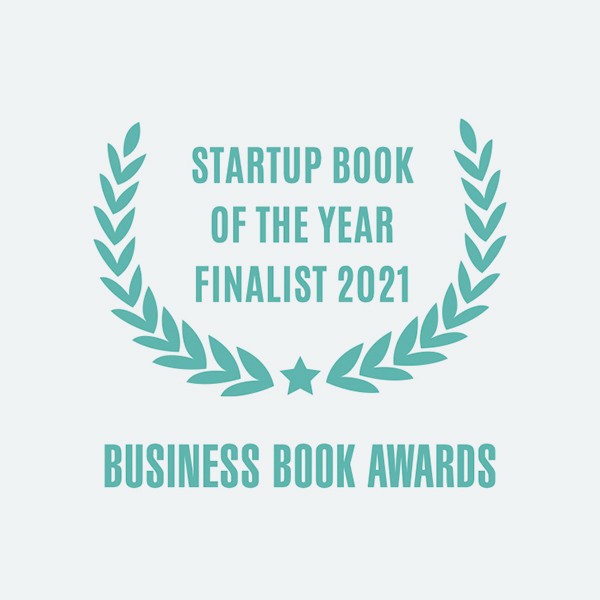
Exit Strategy Services for Startups
At Robot Mascot we’ve supported thousands of founders to develop investor-ready business plan assets all of which include exit strategies for startups.
We’ve supported founders from all over the world, helping them develop a startup exit strategy via our global award-winning investor pitch service, PitchReady. As a result of our help in preparing their business plan assets including a solid exit strategy, our founders find they are 40 times more likely to raise investment.
This page will tell you exactly what an exit strategy is, how we develop exit strategies for startups and how to use yours when pitching for investment.
What is a startup exit strategy?
A startup exit strategy is a planned approach for a founder or investor to reduce or entirely end their involvement in a business while maximising their financial gain or minimising loss. This strategy is typically considered and often outlined in the early stages of the business, though it can evolve over time. The exit strategy is a critical part of a startup’s overall business plan, as it not only affects how the business is structured and operated but also influences investor decisions.
The role of your startup exit strategy in preparing for investment
Exit strategies are not just a contingency plan for startups, they are a critical element in preparing for investment. This aspect of your business plan is in fact viewed by potential investors as a forecast of a startup’s long-term trajectory because it offers investors a clear vision of the potential return on their investment.
When entrepreneurs articulate their exit plans, they demonstrate not only ambition but also a realistic understanding of the business lifecycle. This reassures investors that the founders are not just passionate about their venture but are also pragmatic about its future.
Incorporating a well-thought-out exit strategy into a pitch for investment does more than outline the endgame, it provides a roadmap for growth and profitability and it shows investors how the startup intends to increase its value over time – whether through acquisition, public offering, or another route. This forward-thinking mindset is important to investors because they’re not just investing in the current state of your startup but in its potential future value.
A clear exit strategy can significantly enhance a startup’s attractiveness by aligning the interests of founders and investors. It sets a shared goal and a mutual understanding of what success looks like. This alignment is particularly important for investors who are often looking for a tangible and timely return on their investment.
Also, discussing your startup exit strategy with investors opens up conversations about risk management, so you can demonstrate your awareness of potential market shifts, competitive dynamics, and other factors that might influence the exit process. This level of strategic planning and risk assessment can be a key differentiator for investors when they decide where to allocate their funds.
READ: Startup Exit Strategy: Why You Can’t Ignore The Endgame In Your Business Plan
What’s in a startup exit strategy and how do you develop one?
As a startup founder, you should understand the components of an exit strategy. It’s not just a plan for ending your involvement in your business, it’s a blueprint for maximising your company value and ensuring you can present a business case that has the potential to deliver investors huge returns.
Here’s a breakdown of the key elements in an exit strategy and why each is important:
Exit objective
The first step is defining your ultimate goal. Are you aiming for an acquisition, an initial public offering (IPO), a management buyout, or simply passing the business to a family member? Your objective will shape the strategy and influence business decisions along the way. It will also impact your attractiveness to investors.
Valuation target
Determine the value you aim to achieve for your startup at the time of exit. This target helps in making strategic decisions, such as when to exit, and guides you in growing and scaling your business to meet this valuation.
Timing
The timing of your exit can significantly impact the value you realise. Consider market conditions, industry trends, and the maturity of your business. Planning to exit too early or too late can affect the attractiveness of your deal, and impact the returns your investors expect you to deliver.
Succession planning
Who will take over and how the transition will be managed is essential. Having clear expectations as well as a plan for managing the transition of ownership ensures business continuity and can affect the value and desirability of your business to potential acquirers.
Financial and legal preparation
Clean and transparent financial records, compliance with regulations and a solid legal structure, makes your business more attractive and can expedite the exit process. Putting these foundations in place from day one is a great way to showcase to investors you are already thinking with an exit in mind.
Potential buyers or successors
Identify who might be interested in acquiring your startup or taking over its operations. This might include competitors, larger companies in your industry, or even your own management team. Evidence of recent sector acquisitions and details of active buyers in your niche are a great way to add credibility to your startup exit strategy.
Exit team
Try to find an advisor who’s been through the exit process – ideally as a founder or business owner. This insight will guide you to build an exit-ready business and give investors greater confidence in your ability to deliver a valuable exit.
Post-exit plan
Finally, consider your personal and professional goals post-exit. Whether it’s starting another venture, retiring, or something else, having a plan gives you direction once the exit is complete. Investors may ask what is next – the answer to this question can give them meaningful insight as to what drives you.
Each element of your exit strategy is included to ensure that when the time comes to exit your startup, you are prepared not just to leave, but to do so in a way that maximises the value of your business, secures its legacy, aligns with your personal and professional aspirations and delivers your investors maximum returns. Remember, an exit strategy isn’t a sign of pessimism, it’s a hallmark of strategic, forward-thinking leadership.
Startup exit strategy example
Let’s consider a hypothetical startup, ‘EcoTech Innovations, which specialises in developing eco-friendly technology solutions for homes and businesses.
Here’s an example of how their exit strategy might be structured:
- Exit objective
EcoTech Innovations aims for an acquisition by a larger company in the green technology sector within five to seven years. This objective aligns with their vision to expand their technology’s reach and impact through the resources and network of a larger entity. - Valuation target
The founders set a target valuation of £50 million at the time of exit. This ambitious target is based on projected revenue growth, market expansion, the development of proprietary technology and current industry EBITDA multiples. - Timing
The ideal exit window is identified as five to seven years post-launch. This time frame not only allows EcoTech to establish its market presence, build a solid customer base, and achieve consistent revenue growth, making it an attractive acquisition target; but also maximises returns for their initial investors within a timeframe considered reasonable to the average investor. - Succession planning
In the event of an acquisition, the founders plan to transition the management responsibilities to the acquiring company over a two-year period. This gradual transition is designed to ensure operational continuity and retain customer trust. - Financial and legal preparation
EcoTech has ensured all intellectual property rights are secured and protected. It also plans to use a chartered accountant to keep and maintain meticulous financial records and will employ a CFO from Year 2. Regular audits are planned to keep financial statements transparent and investment-ready. - Potential buyers or successors
The founders regularly network within the green technology industry to identify potential acquirers. They focus on larger companies that have a history of acquiring startups and a commitment to sustainable technology. They have identified 5 such companies and can provide evidence of 3 recent acquisitions in their sector at a similar target exit value to their own. - Exit team
EcoTech has secured the guidance of an experienced entrepreneur who has built and sold 3 businesses. This advisor will sit on the board and is responsible for guiding the company to build with an exit in mind and maximise its exit value and potential. - Post-exit plan
The founders plan to remain with the acquiring company in advisory roles for at least two years post-acquisition. After this, they intend to explore new entrepreneurial ventures in the sustainable technology space.
This exit strategy for EcoTech Innovations is designed to maximise the company’s value, ensure a smooth transition during the acquisition, and align with the founders’ long-term personal and professional goals. It not only prepares the startup for a successful exit but also ensures its legacy continues under new ownership.
What are the best exit strategies for startups and investors?
The best exit strategy for a startup will depend on the specific goals, industry context and the scale of the business.
However, some commonly favoured types of exit strategy include:
- Acquisition
- This is often considered one of the most straightforward exit strategies. A larger company buys the startup, usually for its innovative technology, talent, customer base, or to eliminate competition. This can be lucrative for investors and founders, especially if the acquiring company is a major player in the industry.
- Merger
- Similar to an acquisition, a merger involves combining with another company. This can be a strategic move to strengthen market position, expand product offerings, or consolidate resources. Mergers can offer significant financial benefits and are often pursued to create a more competitive and financially robust entity.
- Initial Public Offering (IPO)
- Going public is a prestigious but complex exit strategy. It involves offering shares of the startup to the public in a new stock issuance, providing significant liquidity for investors and founders. An IPO can also raise substantial capital for the company, but it requires meeting regulatory requirements and ongoing public disclosure.
- Management Buyout (MBO)
- In this scenario, the company’s management team or a group of private investors buy the majority of the company. This can be a good option if the management team is capable and willing to take over the business, ensuring continuity and potentially a smoother transition.
- Secondary Sale
- Investors or founders sell their shares to other private investors, like venture capitalists, private equity firms, or even other companies. This can be a practical option for providing early investors or founders with a return on their investment without having to sell the entire company or go public.
- Asset Sale
- Selling off the company’s assets, rather than the company as a whole. This can be a viable option if the startup has valuable assets (like intellectual property) but perhaps hasn’t achieved the scale or profitability to attract buyers for the entire business.
- Family Succession
- In some cases, especially with family-owned businesses, passing the company down to the next generation can be a viable exit strategy. This keeps the business within the family and can be a source of pride and legacy, though it requires careful planning to ensure the successors are prepared and capable. It’s also the least attractive option to most investors as they fail to realise a financial return (unless the family are willing and able to buy the investor’s shares at a fair market value).
Each of these strategies has its advantages and challenges, and the best choice depends on the startup’s specific circumstances, including its financial health, market position, and the goals of its founders and investors. We can help you develop an appropriate exit strategy for you and your startup. Get in touch today.
Getting your business ready: Understanding Investment Readiness
Before you consider pitching your business to investors, you must ensure that your business is indeed ready for investment – that it is ‘investment ready’.
Investment readiness refers to the state in which a startup or business has prepared itself to be an attractive prospect for investors. Being ‘investment ready’ means a founder has all the elements in place that investors look for when considering whether to commit funds to a business – including a viable exit strategy.
There are investor readiness agency for startups that can help businesses get ready for investment and develop their business case. We at Robot Mascot are one such company.
If you are seeking investment for your business and need help conducting market analysis and market research why not get in touch?






Copyright ©Robot Mascot Ltd. All rights reserved.


